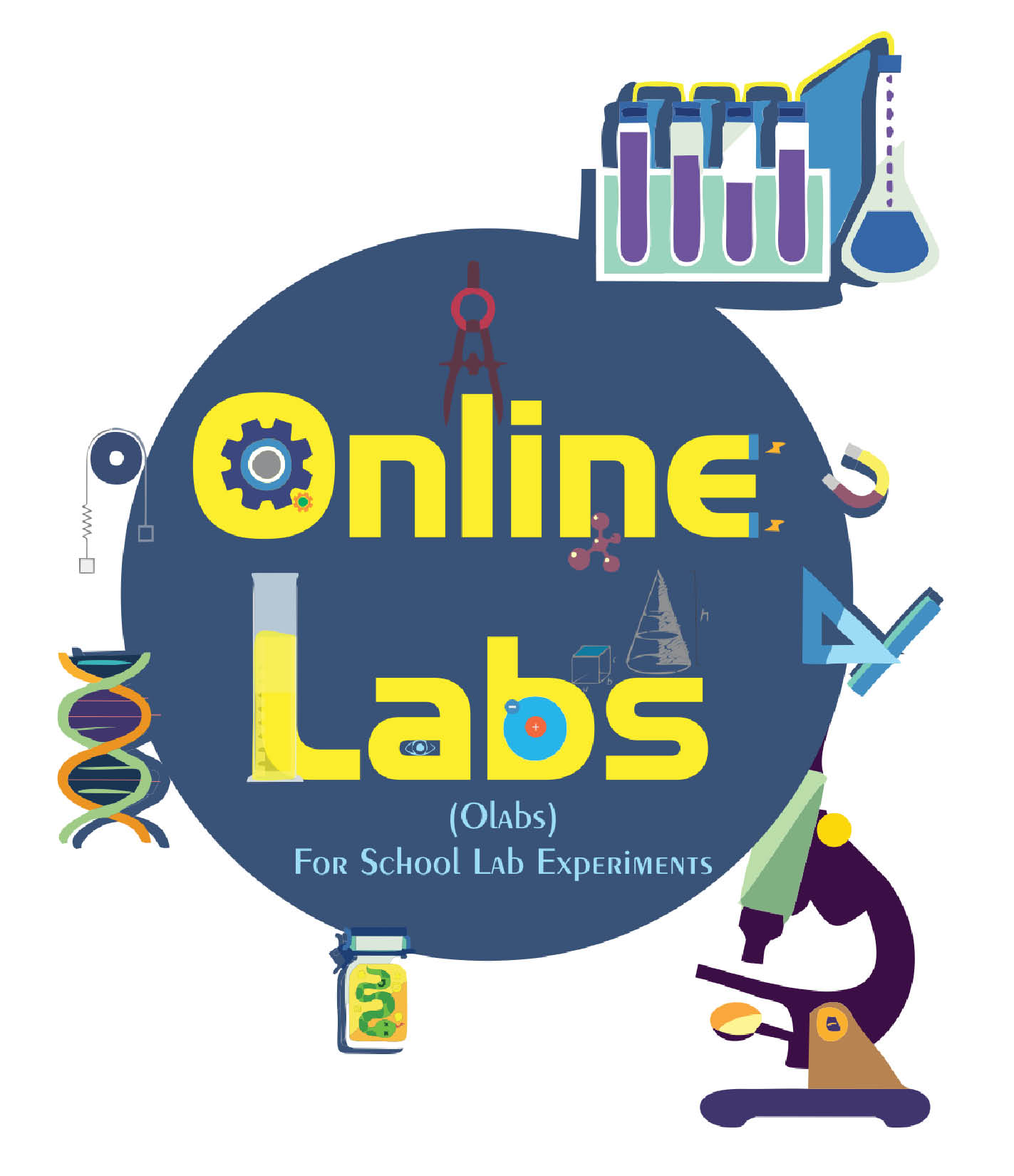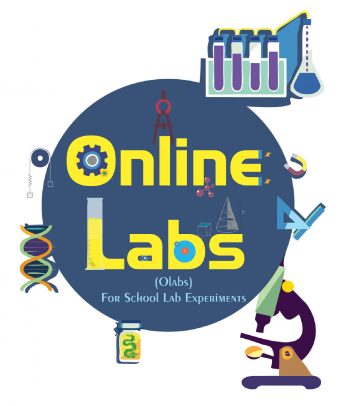
School education in India faces many challenges including the lack of infrastructure and shortage of trained teachers. Even in places where this is not a major concern, students come out with little practical knowledge of the concepts and theories they learn. Read on to discover how CDAC is addressing this problem.
Much has been said about the inadequate ‘higher order thinking skills’ among students passing out from our education system. As per the curriculum, science subjects should have associated labs, the study of mathematics should be accompanied with activities, and so on. But due to various constraints, these guidelines are not implemented adequately in most Indian schools. Lab access is usually limited in terms of time and resources available. And in many places, there is no lab worth mentioning. Added to this is the need to continuously replenish stock of raw materials to conduct the lab activities.
Virtual labs address this deficiency in practical exposure. These labs simulate the physical processes on a computer system, allowing the student to perform the activity on a computer screen. For example, in a chemistry virtual lab, the student can put a beaker on the table, add some chemicals to it, mix it with a spoon, boil it, and so on—all while sitting in front of the computer. As a physics student, you can suspend a spring on a stand, add various weights to it, observe it oscillating and coming to rest, measure the increase in the spring’s length, and plot a graph to verify Hooke’s Law. Online Labs (OLabs) is a set of such virtual labs, for schools.
Computers are today pretty accessible and affordable for students. Getting Indian languages on them is also easy. Fast-dropping prices and healthy competition is helping matters further. Today, the trend is to use tablets instead of laptops and desktops, which can be considered as a computer for most purposes. One major strength of these devices is that they are used in a personal way, unlike, for example, a TV. And, hence, students can spend as much or as little time as they need on their topics, without worrying about other students in the class. Therefore, a computing device offers tremendous scope for open-paced learning, to account for varying learner profiles. OLabs exploits this opportunity, offering a number of virtual labs for schools, allowing students to practice on them as and when they are comfortable, at their own pace. The project is supported by the Department of Electronics and Information Technology (DeitY), government of India, and designed and implemented by CDAC Mumbai and Amrita Vishwa Vidyapeetham.
The OLabs approach
If you do a Google search for any specific topic, say Hooke’s Law, chances are that you will come across plenty of material. Good animations and even simulations can be located. Many of these are available for free, at least for use. But these are hardly used in any schools. There are two major reasons for this. First, for such online resources to be used in a school, these first need to be studied well and integrated into the curriculum. This implies that the online resources should use the same jargon and context that children are familiar with from their curriculum. Many of the simulations do not easily fit into this mould. Teachers will need to demonstrate the concepts in class, and perhaps give assignments or lab work using the online tool. This is usually a hard task, since the tool may not be developed for such use cases. Teachers, therefore, need to understand such tools, and figure out how best they can be used in the class. There are also issues linked to fitting these tools into the lab environment, with support for taking readings, making observations, plotting graphs, etc.
OLabs has been designed to address these concerns. First of all, there is a single portal under which all labs are accessible, irrespective of the subjects or the developer. See Figure 1, which shows the opening page of the website www.olabs.edu.in. It is fully browser based, and hence no local software or installations are required.
Generally, all the labs follow a common structure, as shown in Figure 2.
There is a Theory tab, which documents the theoretical concepts addressed by the lab. The explanation is brief, since this is usually available in detail in the textbooks. This will help to check on the relevant formula, definitions, etc, when students are working on a lab, or as a precursor to performing the lab activity. The Procedure tab outlines the activity, step by step, both when you do the activity in a real lab, and when you do it using OLabs. This is usually the recommended procedure as per the curriculum, and OLabs reflects this sequence as far as possible.
The third tab is either a video, showing the lab activity in real life (e.g., in case of biology), or a teacher-guided view of the lab, which can be used to explain the lab to a class. The fourth tab is the actual lab, and offers an interactive platform for the student to perform the activity and control the relevant parameters within the intended scope of the lab activity. Where required, an observation window is provided to record the readings from different trials, and a graph plot depicting the same, visually. Where measurements are needed, a virtual scale is also provided.
A Viva voce tab is also provided with a few multiple choice questions for self-testing the concepts. The Reference tab includes some reading material, Web links, etc, that are relevant to the particular activity and can be used for further reading. This structure is one of the key USPs of OLabs, as it provides a complete ecosystem for directly adopting the system into the curriculum.
The labs follow the structure and process as outlined in the CBSE (Central Board of Secondary Education) lab manuals, further easing the adoption process. Despite this compliance to CBSE, adopting OLabs for state boards should not be difficult, since most of the syllabus and labs are expected to be common. Language can be a deterrent, and OLabs, in its current form, supports this too. The team behind the project has already translated OLabs into Hindi, Malayalam and Marathi. The same process can be extended to other languages—only translation of the text strings needs to be done. If readers can help to translate OLabs into any of the other Indian languages, please do get in touch with us.
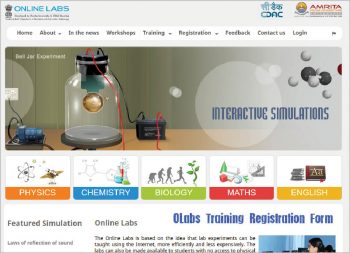
Using OLabs
Given the approach we have followed, OLabs can be used in a variety of ways. Teachers can use the online labs in the classroom to explain the lab activity to be performed in the real lab. This helps to remove the surprise element when the student gets to the lab, and makes the lab session more effective. Teachers can also frame review questions with the lab as the backdrop, asking the students to predict what will happen under particular conditions. Students can use the lab before the physical lab session, to familiarise themselves with the process, and to chart out the expectations. As a post-lab activity, they can use it with more variations, to reinforce the concepts, and to answer any questions they may have. We are sure that creative teachers and students can come up with many more innovative uses for this resource.
The math lab
While the notion of a lab for physics, chemistry and biology is well understood, usually there are no formal labs for mathematics. The math lab in OLabs is envisaged as activities to reinforce conceptual relationships—e.g., the formula for the volume of a sphere. In the curriculum, these are called activities, and usually involve using resources such as paper, glue, sand, thread, scissors, etc, and making shapes and demonstrating similarities. These activities are captured into an interactive online experience allowing the student to perform these virtually. Students can, thus, draw a variety of triangles and see how a particular formula or theorem holds true for each of them. As in real life, they have choices when selecting a point, which step to do in which order, and so on. The system ensures that wrong steps are not performed.
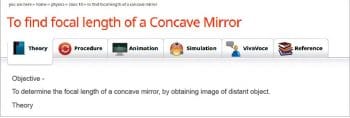
The English lab
For the English language lab, we have designed activities that students can perform repeatedly till they are thorough with a concept. In a real-world tutorial class, a teacher will need to review the work done by students regularly, and give feedback, so that they can improve their performance. This takes up too much of the teacher’s time, and limits the extent of tutorial activities. In OLabs, reviewing the students’ solutions is done by our system, automatically. The feedback is directly dependent on the selected problem and the mistakes made by the student at that particular time. This helps students to notice the problems in their solutions and improve on them with practice.
Another interesting aspect of the English lab is the use of templates to generate sentences, instead of using a set of canned sentences for the activities. This helps prevent blind copying from others, and offers a wide range of sentences for practice. Sophisticated language processing techniques are deployed to make this effective.
English labs are currently available for topics such as tense conversion, voice conversion, use of prepositions, subject-verb agreements, etc.
Current status
The system has been available on the OLabs website for the past few years. There are over 150 labs covering physics, chemistry, biology, mathematics and English. Twelve English labs are currently open to students of different classes, depending on the concepts that they want to practice. The number of other labs is given below (as per the CBSE curriculum).
|
Class/subject |
Physics | Chemistry | Biology | Math |
| IX | 9 | 11 | 9 | 13 |
| X | 13 | 10 | 6 | 12 |
| XI | 16 | 10 | 13 | – |
| XII | 16 | 15 | 8 | – |
OLabs is gaining a lot of attention through various channels, with 50,000 to 100,000 page views a week, depending on the academic calendar. Since many schools do not have the required Internet access for regular use in classrooms or labs, a live DVD version of the entire OLabs system has been developed. There is also a Windows installer for schools to set up the system on their computers, locally.
In 2013, the then CBSE chairman, Dr Vineet Joshi, had written to all schools encouraging them to use OLabs, and recently, another circular has been issued with the same message. It also encourages CBSE teachers to benefit from the training that CDAC offers. In December 2015, the union minister for communications and IT, Honourable Shri Ravi Shankar Prasad, formally launched a programme to train 30,000 teachers on OLabs across India, under the Digital India initiative. This training is free, and we invite teachers from CBSE schools to register on the portal for this programme. We will schedule these programmes in various parts of the country, and will inform those who register, on the participation dates. Over 5000 teachers have been trained so far.
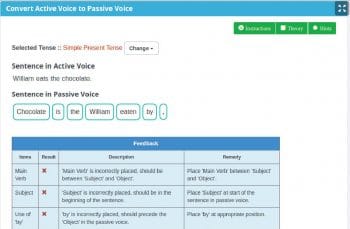
The technologies used
The entire system is built on open source software, and also follows open standards, to ease localisation and other modifications. The technologies used are listed below.
1. Client side: HTML5, JavaScript CCS3, KineticJS, Three.js and JQuery
2. Server side: PHP, JSP and Servlets
3. Database: MySQL
The UI design is responsive; hence, we can use websites in the desktop environment as well as on handheld devices. The development follows software engineering principles, once again using open source software such as Git (code versioning), GitLab (issue tracking and repository management) and Eclipse (IDE) among others.
Acknowledgements
The success of the project owes much to the great support we received from DeitY, government of India, especially from Dr Ajay Kumar, Dipak Singh, D.K. Kalra, Santosh Pandey and A.K. Arora. I also thank the OLabs team at CDAC Mumbai, particularly the team leads Archana Sharma and Manoj Kumar Singh, and the team at Amrita Vishwa Vidyapeetham, headed by Prof. Prema N., for the passion and commitment they bring to the project. Special thanks to Archana for the critical review of this article.
































































